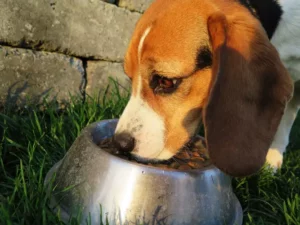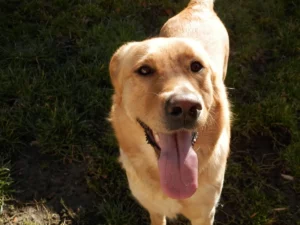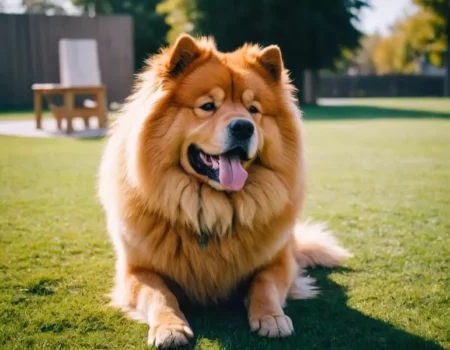Dog grooming is a crucial aspect of pet care. Not only will it keep your dog’s coat looking nice, but it can also help identify health issues and prevent problems from occurring.
Frequent grooming not only aids in shedding and fur cutting but also offers a wonderful chance for pet-owner interaction. Here is some advice on properly grooming your dog to maintain it in top condition.
Contents
Definition of Dog Grooming
Dog grooming is the practice of cleaning and maintaining a dog’s physical appearance. This includes brushing, bathing, nail trimming, ear cleaning, and hair trimming. Regular grooming is essential to keeping your dog healthy and looking its best.

Benefits of Dog Grooming
Regular grooming has many benefits for your dog. It can help reduce shedding, improve the condition of their coat, and prevent skin problems.
Furthermore, it can aid in the early detection of prospective health problems. Regular grooming also allows you to bond with your pet and check for any signs of discomfort or pain.
| A New Free Course on Dog Grooming Reveals the Secret Step-by-Step Techniques used by the best Dog Groomers in the country! Finally, You Can Now Groom your Dog on your own at home without having to hire an expensive groomer! |
Types of Dog Grooming
There are numerous kinds of grooming you may perform on your dog. Brushing helps to remove dirt and debris from the coat and reduces shedding.
Bathing is important to keep the coat clean and free of dirt and oils. Nail trimming helps to keep the nails short and prevents them from growing too long.
Ear cleaning helps to remove any dirt or wax buildup in the ears and prevents infections. Hair trimming is important to keep the coat looking neat and tidy.
Brushing
Brushing is an essential part of dog grooming. It removes dirt, debris, and dead hair from the coat and distributes natural oils throughout the fur, making it look shiny and healthy.
Regular brushing will help keep your pup’s coat looking its best and can help prevent mats and tangles.
Be sure to use the right brush for your pup’s breed and size and always reward your pup with treats and positive reinforcement for good behavior.
Baths
Baths are an important part of grooming your dog. They help keep the coat clean and free of dirt and oils. When bathing your pup, use a shampoo for dogs and warm water.
Rinse thoroughly to remove all soap residue. Towel dry your pup and brush its coat to keep it looking neat.
Nail Trimming
An essential component of dog grooming is nail trimming. It helps keep dogs’ nails short and prevents them from growing too long, which can cause discomfort or even injury.
When trimming your pup’s nails, use the proper tools and take your time. Avoid making deep cuts, as they may result in blood and pain.
With regular nail trims, you can keep your pup’s nails in good condition and help them stay comfortable.
Ear Cleaning
Ear cleaning is an important part of dog grooming. It helps to remove dirt and wax buildup, preventing infections and other issues.
When cleaning your pup’s ears, using the right tools and products for their breed and size is important. Start by removing any apparent debris or wax with a gentle cloth or cotton swab.
Then, use a gentle ear cleaner specifically designed for dogs to flush out any remaining debris. Finally, a cotton ball is used to dry the ear canal and finish the job.
With regular ear cleaning, you can help keep your pup’s ears healthy and free of irritation.
Hair Trimming
Hair clipping is an essential component of canine grooming. It helps keep the coat neat and tidy and can help prevent matting and tangling.
Trimming the fur with the proper equipment and methods is crucial to guarantee that it is even and free of nicks or cuts. Regular trimming can also keep your pup looking its best.
Preparing Your Dog for Grooming
Preparing your dog for the experience is crucial before you begin grooming it. Socialization is key to getting your pup used to being handled and touched, and desensitization helps to get them used to the tools and products you will be using.
Finally, training is important to ensure that your dog follows commands and stays still while you groom it.
Grooming Tools

Several tools are needed for grooming your dog. Brushes remove dirt and debris from the coat. Clippers trim the fur and keep it looking neat.
Shampoo cleans the coat and keeps it smelling fresh. Towels dry off your pup after a bath. Ear cleaners remove dirt and wax buildup from the ears.
Brushes
Brushes are an essential tool for grooming your dog. They remove dirt, debris, and tangles from the coat and help keep it looking clean and healthy.
Various brushes are available depending on your pup’s breed and size. Using the appropriate brush is crucial to guarantee that your dog’s coat is properly cared for and free of filth and debris. Regular brushing can also keep your pup looking and feeling its best.
Clippers
Clippers are an essential tool for grooming your dog. They trim the fur and nails, keeping your pup looking neat.
Because clippers come in several sizes and designs, select the appropriate ones for your dog’s breed and size.
It’s crucial to use clippers carefully and correctly to prevent any damage. With regular use, clippers can help keep your pup looking its best.
Shampoo
A Shampoo is an essential tool for grooming your pup. It helps to keep their coat clean and free of dirt and oils.
When choosing a shampoo, make sure it is formulated for your pup’s breed and size. Avoid shampoos with strong chemicals or perfumes, as they irritate the skin. Regularly using shampoo can help keep your pup looking and feeling its best.
Towels
Towels are an essential tool for grooming your pup. These can be used to mop up spills, dry off after baths, and even assist with brushing.
When selecting a towel for your pup, ensure it is soft and absorbent. Towels are also great for wiping down paws after a walk or snuggling up after a long day. You can keep your pup looking and feeling its best with the right towel.
Ear Cleaners
Ear cleaners are an important tool for grooming your dog. They help remove dirt and wax buildup from the ears, preventing infections and other health issues.
Using the right ear cleaner for your pup’s breed and size is important. Additionally, it is best to be gentle when cleaning the ears to avoid discomfort or injury. Regular ear cleaning keeps your pup’s ears healthy and clean.
Steps for Grooming Your Dog
Once you have the necessary tools, you can start grooming your dog. The first step is to brush the coat to remove dirt and debris.
Then you can bathe your pup to keep the coat clean and free of dirt and oils. Next, you can trim the nails to keep them short and prevent them from growing too long.
Afterward, you can clean the ears to remove dirt or wax buildup and prevent infections. Finally, you can trim the fur to keep the coat looking neat and tidy.
Safety
Grooming Hazards
Grooming hazards can occur if the tools or techniques are inappropriate for your pup’s breed or size. For instance, using clippers that are too powerful might irritate the skin, while using scissors that are too sharp can result in cuts and abrasions.
In addition, grooming supplies like shampoos, conditioners, and sprays may include chemicals that are bad for your dog’s health. Research the goods you are using to be sure they are safe for your dog.
Dog grooming for beginners at home
Dog owners must maintain their pets’ cleanliness and well-being. Grooming dogs is a crucial part of pet care that shouldn’t be ignored. Dog grooming at home can be a terrific way to strengthen your relationship with your pet and save money on salon visits.
Here are some beginner-friendly tips for grooming your dog at home:
1. Start with brushing: Regular brushing helps remove loose fur, dirt, and mats from your dog’s coat. Use a brush suitable for your dog’s hair type and start brushing from the head to the tail. This is also a great opportunity to check for lumps, bumps, or other skin issues.
2. Bath time: Bathing your dog once a month (or as needed) helps to keep them clean and fresh. Use dog-specific shampoo and lukewarm water to avoid irritating their skin. Be sure to rinse thoroughly to avoid leaving any soap residue.
3. Nail trimming: Keeping your dog’s nails trimmed is important for their comfort and health. Use nail clippers designed for dogs and make small cuts to avoid cutting quickly (the pink part of the nail that contains nerves and blood vessels).
4. Ear cleaning: Dogs with floppy ears or excessive hair growth may be more prone to ear infections. Clean your dog’s ears regularly using a dog-specific ear cleaner and cotton balls. Avoid using Q-tips as they can push wax and debris further into the ear canal.
5. Teeth cleaning: Dental hygiene is as important for dogs as it is for humans. Brush your dog’s teeth regularly using a dog-specific toothpaste and toothbrush. You can also provide dental chews or toys to help keep their teeth clean.
Always be gentle and patient when grooming your dog, especially if they are not used to it. Regular grooming can help keep your dog healthy, happy, and looking its best!
Frequently Asked Questions
What are the benefits of regular dog grooming?
Regular dog grooming provides numerous benefits for both the dog and its owner. Grooming helps maintain a healthy coat, reduce shedding, identify skin or health issues, and prevent matting and tangling.
It can also help to keep your pup smelling fresh and looking its best. Regular grooming can also be a great bonding experience for you and your pet.
What are the different types of dog grooming services available?
The dog grooming services include bathing, brushing, nail trimming, ear cleaning, teeth cleaning, and coat trimming. Additional services may also be available, such as anal gland expression, de-matting, and flea and tick treatments.
What should I consider when choosing a groomer for my dog?
When choosing a groomer for your dog, consider their qualifications, experience, and reviews. Make sure they are knowledgeable and experienced in grooming your dog’s breed.
Also, ask about their cleaning and sanitation practices and any safety protocols they have in place. Ask for references or read online reviews from other pet owners to get an idea of the quality of their work. Lastly, visit the facility beforehand to ensure it is a safe and comfortable environment for your pup.
How do you cut a Shih Tzu’s hair?
When cutting a Shih Tzu’s hair, it is important to use the right tools and techniques. Start by brushing your pup’s coat to remove any tangles and mats.
Use scissors to trim the fur around the face, ears, and feet. Be sure to use short, even strokes and take your time to avoid making mistakes.
For the body, you can use either clippers or scissors. When using clippers, start at the back and work your way forward. When using scissors, use long, sweeping strokes. Always finish with a brush and comb to ensure a neat and even look
How often should a dog be groomed?
The frequency of grooming depends on the breed and type of coat your dog has. Long-haired breeds may require grooming every 6 to 8 weeks, whereas short-haired types often need to be groomed every 4-6 weeks.
Dogs with thick or curly coats may require more frequent grooming. Regular brushing and combing are also important to prevent mats and tangles.
Conclusion
Grooming your dog is an important part of pet care. Not only does it keep their coat looking nice, but it can also help identify health issues and prevent problems from occurring.
You can keep your pup looking and feeling its best with the right tools and techniques. Just remember to be patient and reward your pup for good behaviour. With regular grooming, you can maintain a healthy and happy pup.
Final Thoughts
Dog grooming is a crucial aspect of pet care that shouldn’t be ignored. Finding a qualified and experienced groomer who can provide quality services in a safe environment is important.
Additionally, you should brush and comb your pup regularly and groom them according to their breed and coat type. You can keep your pup looking and feeling its best with the right tools and techniques.








